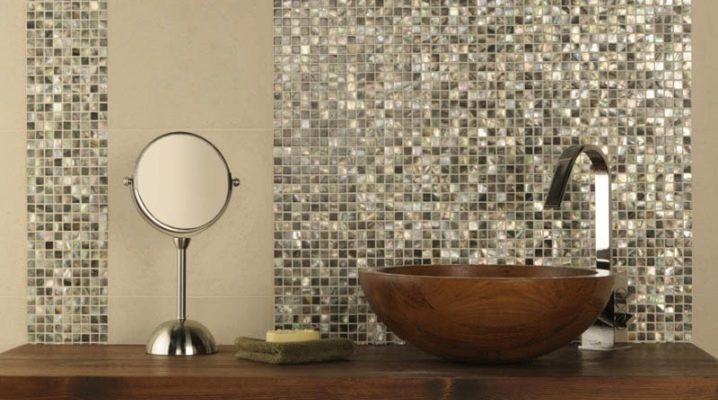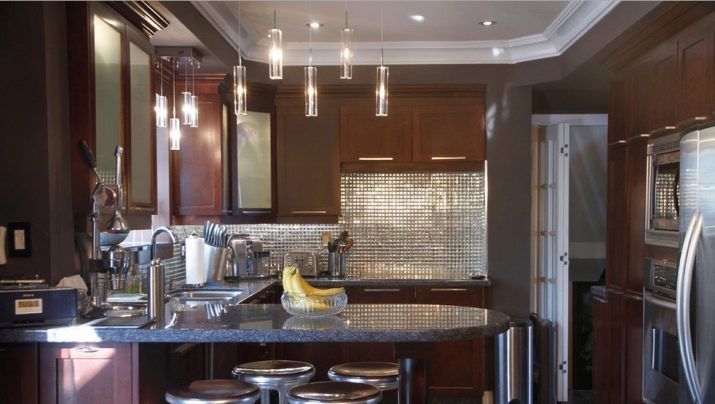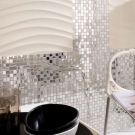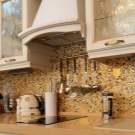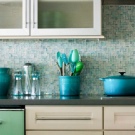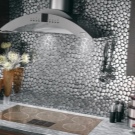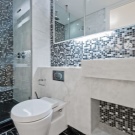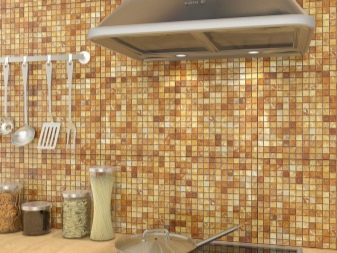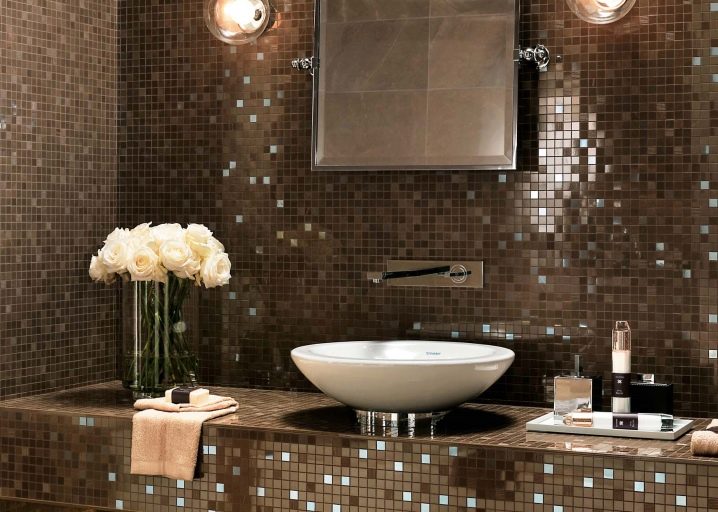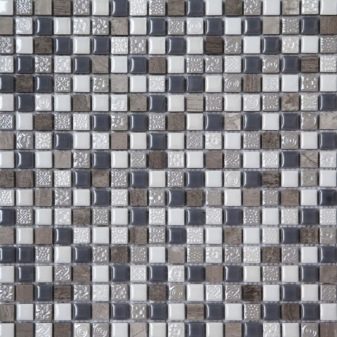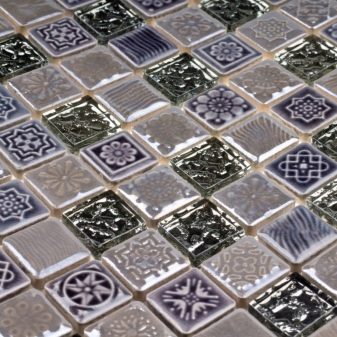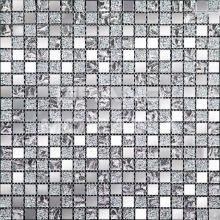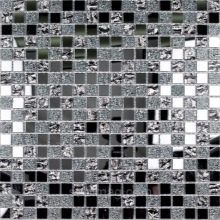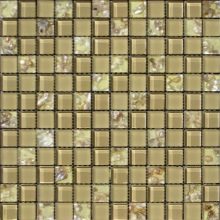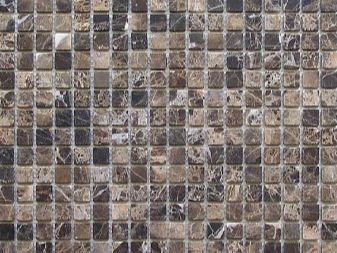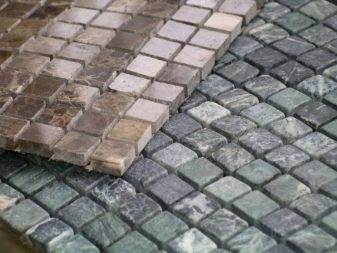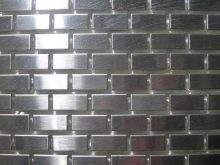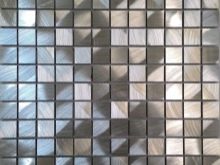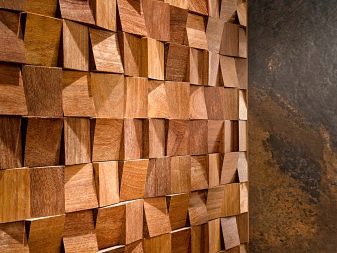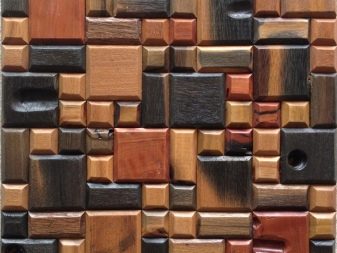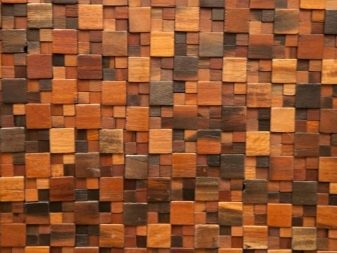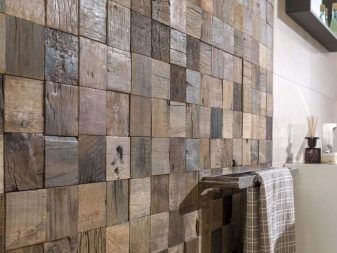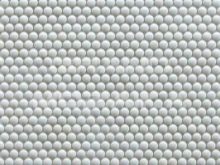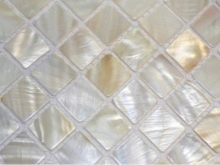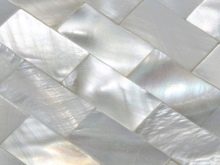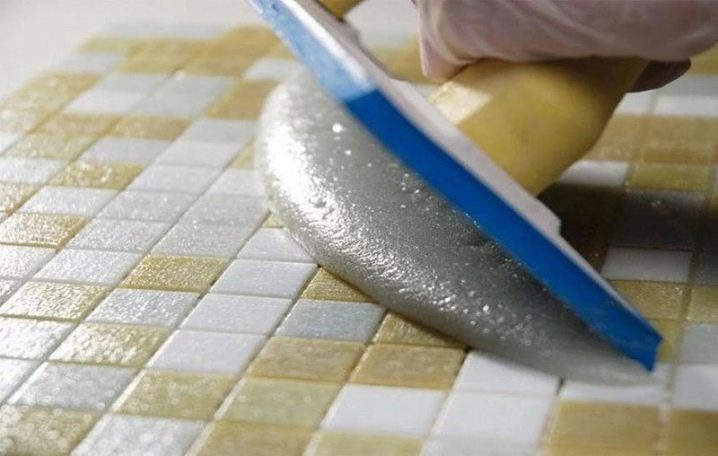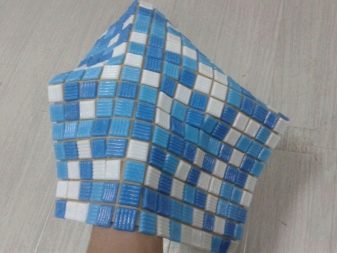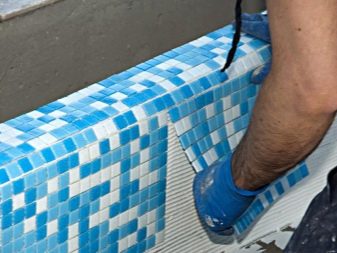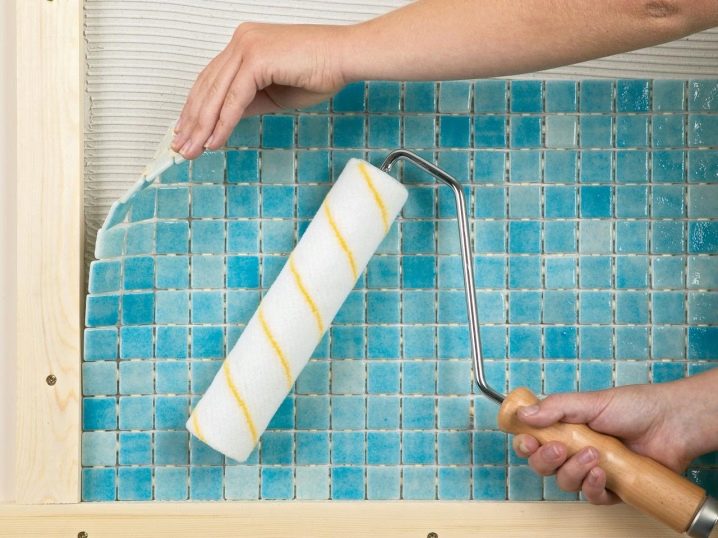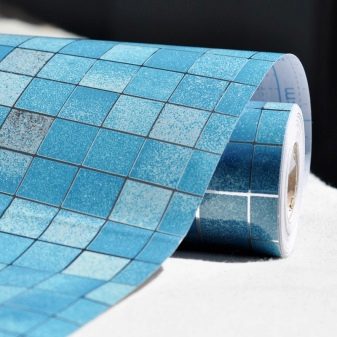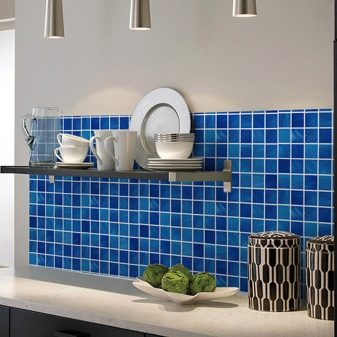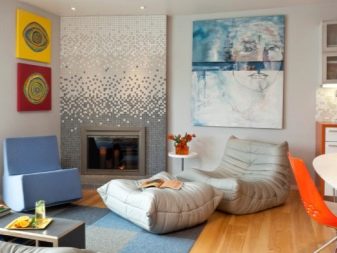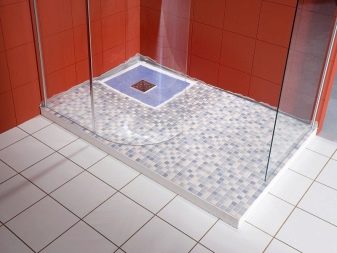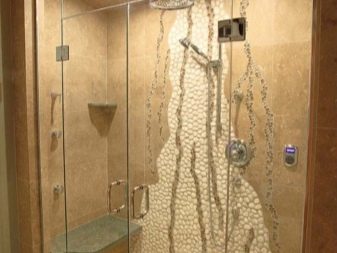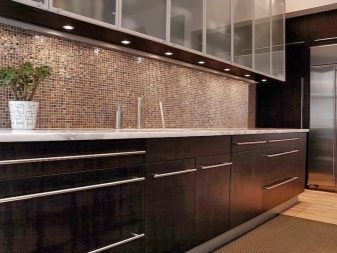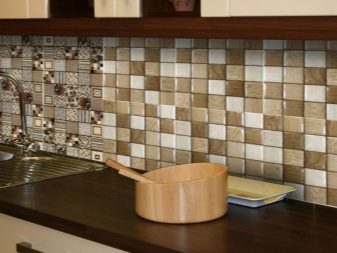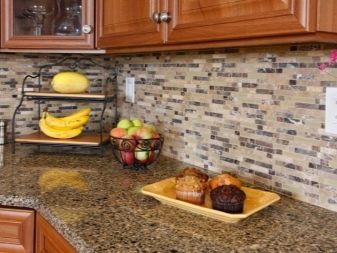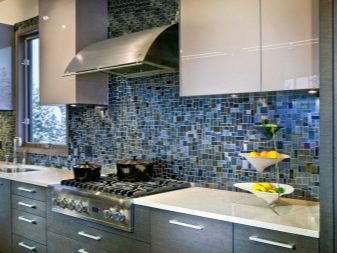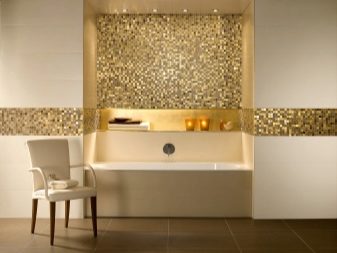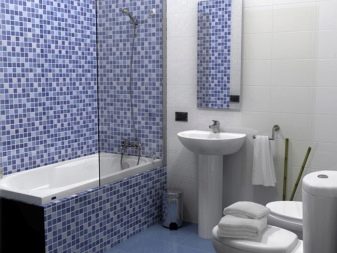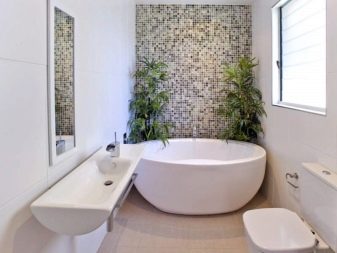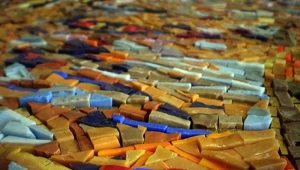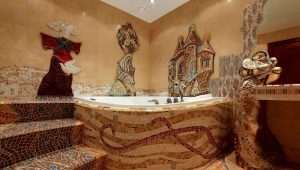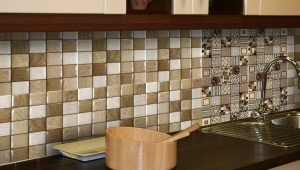Self-adhesive mosaic: features and installation technology
Using a self-adhesive mosaic, you can create an interesting decor or even whole pictures. A variety of colors and textures allow you to match tiny tiles with almost any style.
Where does it apply?
Recently it has become increasingly popular to create compositions for which small tiles in the form of sheets are used or, as it is often called, self-adhesive mosaics. This material is many times smaller than well-known facing tiles, but it is more convenient to use due to the fact that its elements are securely attached to the substrate.
Colorful self-adhesive mosaic tile is a popular solution, but it can not be used on the entire surface of rooms. Interior designers recommend playing with this form in moderation - the mosaic is best placed in only a few places where it will be best presented. Most often, the tile is placed around the mirror in the bathroom: the mirror looks good without a frame, which can be created using mosaics.
Mosaic decor will not work in small rooms, as it optically minimizes space.
It looks great as a body for a bathroom or as a frame for a washbasin - thanks to this, the mosaic is perfectly exhibited. An interesting solution is to use a mosaic to separate zones in the bathroom - you can separate a place for bathing (bath, shower), for example, from a place with cleaning products, baskets for dirty clothes, a washing machine, and so on.
As for the quality characteristics of sheet mosaic, then for them it is no different from ordinary tiles. The main advantage of this material is the ability to create from it a variety of color drawings and compositions. With the help of sheet mosaic in the house, you can create not only the necessary comfort and original design, but also a unique interior.
Species
Mosaic tiles can be square, rectangular and round, they can still be purchased in the form of strips, triangles or rubble.There is a “self-bonding”, for example, for a toilet of individual elements that can be from 1 to 5 cm, but its installation takes a lot of time, because you have to insert each small tile separately.
More popular is sheet mosaic, fixed on a plastic grid, foil or special paper (this form speeds up the laying process). Mosaic, like a large tile, is made of different materials and, depending on the material used, has different parameters.
- Ceramic. The adhesive film mosaic is created from the glazed mass. Ceramics is more durable and durable (resistant to frost and abrasion), it can be laid both inside and outside the room. On the other hand, glazed ceramics is characterized by high water absorption, therefore it cannot be used outdoors.
- Glass. Glass mosaic gives the best layout options. It has different models, colors, is made of frosted and glossy glass, may contain various impurities. It is characterized by very good properties, does not absorb moisture, so that it can be used in especially wet places (for example, in the bathroom).
However, the glass surface is scratched, so it’s better not to lay it on the floor, because it will quickly lose its charm.
- A natural stone. This type of mosaic is made of marble (soft and susceptible to damage), quartz, travertine and even pebbles. It retains its properties for a long time, it can be laid both on the walls and on the floors.
- Metallic. These are actually small ceramic tiles on which thin plates are glued (they can be made of various metals). Unfortunately, metal is a soft material that makes a tile susceptible to scratching.
- Wooden. Usually made from exotic wood (solid wood), but also from local species. Mosaic tiles are impregnated with special solutions, so they can be used in the bathroom, but it is better not to place them in places prone to direct water (for example, on the wall next to the shower).
- Pearls and other options. An exclusive version is made of pearl shell. However, it is expensive, so usually this mosaic acts as a design accent. In addition to the mosaic with pearl spraying, you can find one where there are elements of gold. It is worth as jewelry.
Facing the mosaic sheet
The small-sized tile has an original and neat appearance, and if you still take into account the fact that it is convenient to use, then its wide distribution becomes quite explicable. The process of installation of cladding with the use of this material is extremely simple, and thanks to the square tiles, which are small in size, it allows you to finish even on surfaces that are small in size and complex in shape. To do this, just cut the desired block of elements.
There are no limitations in the combination and choice of shades of the self-adhesive mosaic. In addition to combining sheets of different colors, it is also possible to use small pieces, which can be interspersed in a random order in the pre-selected colors. Before starting work, it is desirable to draw up a plan for the future composition, which can be laid out on some flat surface, for example, on the floor.
To tile is not mixed and evenly laid, you can use lined pattern. It will act as a guide for straight lines.
Adhesion technology
If you have to combine a self-adhesive mosaic of different color, you need to decide how exactly the colored sheets will be attached to each other. This can be done first on some flat horizontal surface. Along the combined rows of tiles, slots will be made for each row. The length of the cuts is varied by changing the number of tiles to be removed, which can be, for example, no more than 4–5 elements.
At the next stage, it is determined which tile will be considered as extra. Instead of the removed elements of the top sheet, thus, tiles of the bottom sheet will be placed. As a result, a mosaic composition with a certain color will be obtained. In a similar way, you can add or remove tiles on other sheets.
In order not to be mistaken with what will be deleted and which will not, they are marked. For this, you can use, for example, a wax-based pencil.
The next stage is the laying of mosaic sheets on a previously prepared surface. For fixing them on the basis use special glue. Having attached a sheet of material, necessary on color, on the required plane, it is pressed by the small roller.To reduce the load that the sheet of tiles exerts on the surface to be treated, it is possible to arrange a wooden batten under it. Due to the pressure of the roller ensures a reliable adhesion of the material with the wall, as well as the uniformity of its sticking.
According to the aforementioned technology, a sheet of mosaic of a different color is laid, of course, with full compliance with the correspondence of the cut out elements and the obligatory alignment of the sheets according to a previously drawn pattern of the image. The next sheet with the same small roller is also well ironed, fixing it on the surface. Particular attention is paid to the forming seams, which can go at an oblique angle or loosely attached to the wall.
During the drying of the glue, by means of which the mosaic was fixed on the surface to be treated, the tiles previously marked with a pencil are removed with a knife. This is most conveniently done at the stage of gluing sheets, when they are securely fixed on the plane. The combination of various sized slots is a rather laborious process, requiring the artist to be as accurate and accurate as possible.
At the next stage, other pieces of tile of the selected shades are pasted into the cuts. According to this technology, the facing continues, of course, while maintaining the unity of the previously developed composition. Upon completion of the glue drying, the formed joints between the sheets are treated with a grout.
Features of work
Self-adhesive mosaic is considered an expensive finishing material. Therefore, you need to learn exactly how to put it in order to enjoy its beauty over the years. Laying a mosaic by a qualified tiler is more expensive than facing with ordinary ceramic tiles (the more complex the sample, the more expensive the work). Of course, other factors also influence the price of the assembly, such as the type of substrate, the need for a special adhesive solution, or very precise work.
Many of these factors are related to the type of base, as it forces to apply additional, specialized and complex solutions. Absorbent substrates such as gypsum, cement, cement-lime plaster require the use of a fairly simple acrylic resin based treatment. Their task is to adjust the absorbing capacity of the substrate and to ensure good adhesion of the next layer, in this case, the adhesive solution.
Grouting requires special care.There are many more joint surfaces than tiles with large formats, so there is a danger that they will dry for too long. In addition, preparations for non-absorbent substrates contain synthetic resins with the addition of microquartz filler, which causes "roughness" and an increase in the surface of the base.
Use in the interior
As mentioned earlier, the mosaic works in different roles. It can be used in many places. It works as a lining of various types of surfaces, for example, walls for shower cubicles, for covering round or semi-circular baths, as well as the above-mentioned mirrored frames.
If you abandon the traditional tray in the shower and leave just a floor drain, you can lay out a mosaic, but more durable, ceramic.
It is not surprising, because the mosaic gives unlimited possibilities in the design of rooms: it also forms the space in the kitchen and decorates it.
A rather interesting way to cladding surfaces is a combination of different materials. You can combine mirrors, tiles, glass and so on.If you do this, for example, in the bathroom, then you can create a kind of pool box from it, drastically changing the small-sized space, expanding it and enriching it with a combination of block glass structures and tiled lining.
How to fix a self-adhesive mosaic, you will learn from the following video.
